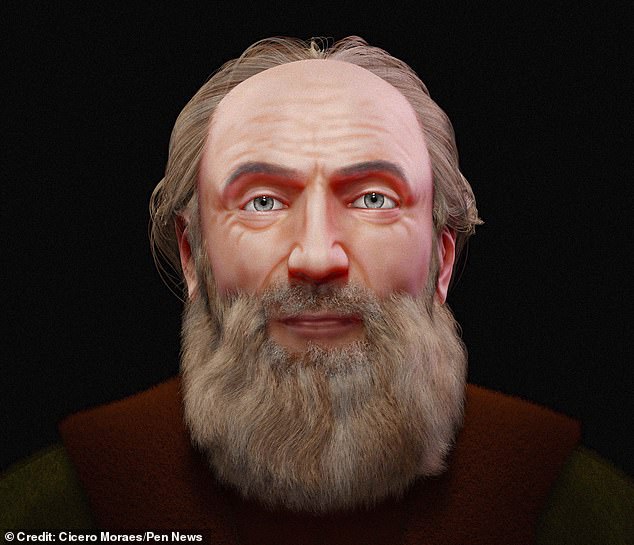The cold gaze of Russia’s cruelest tyrant falls upon us 440 years after his death, after scientists reconstructed his face from his skull.
Ivan the Terrible, the first tsar of Russia, transformed his country into an empire, expanding its borders eastward to Siberia and southward to the Caspian Sea.
But he is best remembered for his barbarity, having his subjects quartered, boiled alive, impaled, roasted, drowned under ice and torn to pieces by horses.
He is even said to have beaten his own son to death, enraged after being confronted for beating the prince’s pregnant wife, causing her to miscarry.
Yet for all his infamy, the Tsar’s true face has been lost to history: a faded engraving is perhaps the only depiction of him from his lifetime.
The cold gaze of Russia’s cruelest tyrant falls upon us 440 years after his death, after scientists reconstructed his face from his skull.
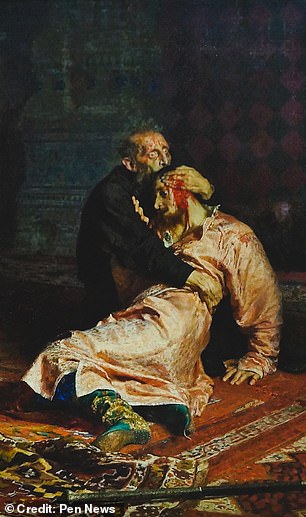
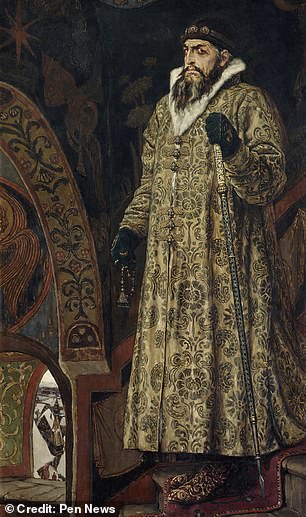
Ivan the Terrible, Russia’s first tsar, transformed his country into an empire, expanding its borders eastward to Siberia and southward to the Caspian. But he is best remembered for his barbarity, dismembering his subjects, boiling them alive, impaling them, roasting them, drowning them under ice and quartering them on horseback.
We can now see his frozen face for the first time in centuries, after a scientific reconstruction of his face was made from his skull.
The Tsar’s tomb was excavated in 1963 by Soviet scientist Mikhail Gerasimov.
Cicero Moraes, lead author of the new paper, said: ‘Based on Dr Gerasimov’s study, it appears that Ivan was leading a disordered life of overeating and alcohol abuse.
‘This must have worsened his condition in his later years.
‘This is in contrast to his appearance when he was younger, when he was described as tall, with beautiful hair, broad shoulders, strong muscles and a pleasant face.
‘An interesting fact is that they found a large amount of mercury in his body, which led to suspicions of poisoning.
‘But given the customs of the time, it is possible that it was used as a treatment for some health problem.’
The final face represents a combination of several approaches.
One method involved using data from living donors to reveal the likely thickness of the tsar’s skin at different locations on his skull.
Another technique used was anatomical deformation, in which the face and skull of a living donor were digitally altered until it matched the dimensions of Ivan the Terrible.
“The final bust was a combination of all this data,” said Moraes, a Brazilian graphics expert, calling it a “strong and determined” portrait.
He continued: “It was a very interesting experience, as it involved not only a facial approach, but the study of the history of the Tsar.
‘I found sources that affirmed the epithet ‘terrible’ and others with different evidence, indicating that the fame may have been exaggerated, for example, by enemies and adversaries.’
A depiction of Ivan the Terrible in life was revealed using multispectral imaging in 2017, on the cover of a book called The Apostle, published in 1564.
And although it is too discolored to compare with the new reconstruction, Mr. Moraes said the face he created matched well a previous reconstruction done by Dr. Gerasimov himself.
He said: ‘After finishing, I compared the faces and although we used different approaches to composing the busts, the results were very similar.
‘They only differ in the region of the lower lip and chin.’
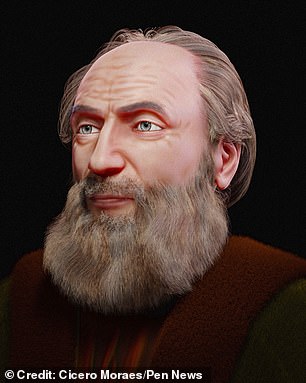
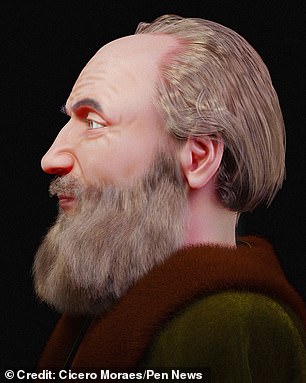
We can see his frozen face for the first time in centuries, after a scientific reconstruction of his face was made from his skull.
Ivan the Terrible, who reigned as Ivan IV, was only three years old when he rose to power following the death of his father.
His mother initially ruled as regent, but five years later she too would die, supposedly from poisoning, and the boy would become a pawn in the power struggle between competing noble families.
In statements attributed to the Tsar, he says of this period that he and his brother lived as “vagrants and children of the poorest.”
Animals were apparently the most affected by his wrath, and he is said to have plucked feathers from live birds and thrown cats and dogs out of windows.
But at 13, he was ready to break free from his captors.
At a feast in 1543, he had Andrei Shuisky, the power behind the throne, arrested and executed; according to legend, he was torn to pieces by dogs.
A period of relative peace followed, but as he entered his 30s, Ivan IV became paranoid about a double whammy.
His wife died first in 1560, apparently from poisoning.
Then, four years later, his close friend Andrei Kurbsky went over to the other side during a war against the Polish-Lithuanian Commonwealth.
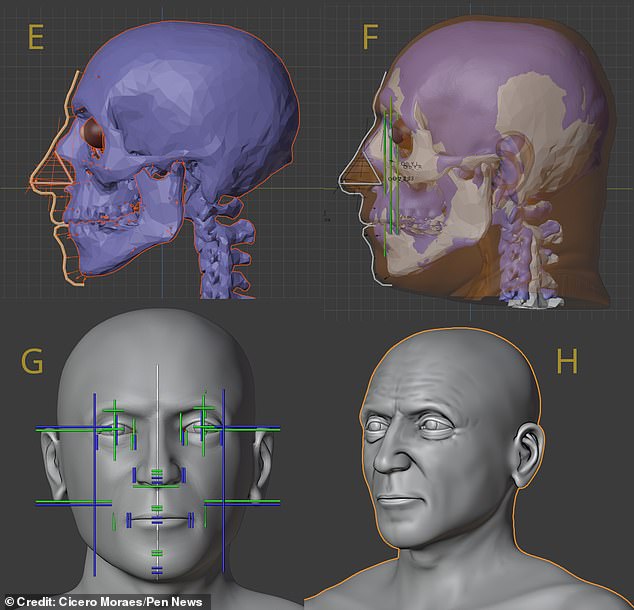
Another technique used was anatomical deformation, in which the face and skull of a living donor were digitally altered until it matched the dimensions of Ivan the Terrible.
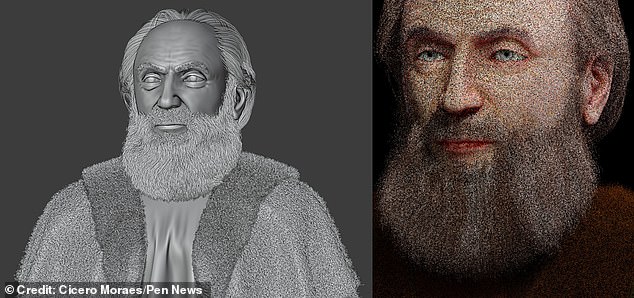
Although it is too faded to compare with the new reconstruction, Moraes said the face he created matched well with an earlier reconstruction done by Dr. Gerasimov himself.
Ivan IV attempted to abdicate, citing treason by the aristocracy, but the court could not rule without him and begged him to return.
As a price, he demanded the right to execute those considered traitors and confiscate their property without interference.
He also decreed the creation of the oprichnina, a vast portion of Russia where he could rule with absolute power.
Backed by his personal guard, the Oprichniki, he brutalized the territory and executed anyone who fell into his paranoid zeal.
In 1570, the Tsar had 15,000 people killed in Novgorod (then Russia’s second city) in a massacre so brutal that the city never regained its preeminence.
A legend, perhaps apocryphal, says that he also blinded the architect who built St. Basil’s Cathedral in Moscow so that he could never build anything as beautiful again.
He died at the age of 53, in 1584, during a game of chess, and was buried in the Archangel Cathedral of the Russian capital.
After assassinating his heir, Ivan Ivanovich, the Tsar was succeeded by his second son, Feodor Ivanovich.
Uninterested in politics, Feodor I left others in charge and died childless, ending the Rurik dynasty and plunging Russia into a period of crisis and anarchy known as the Time of Troubles.
Mr. Moraes published his study in the magazine OrtogOnLineMag.

